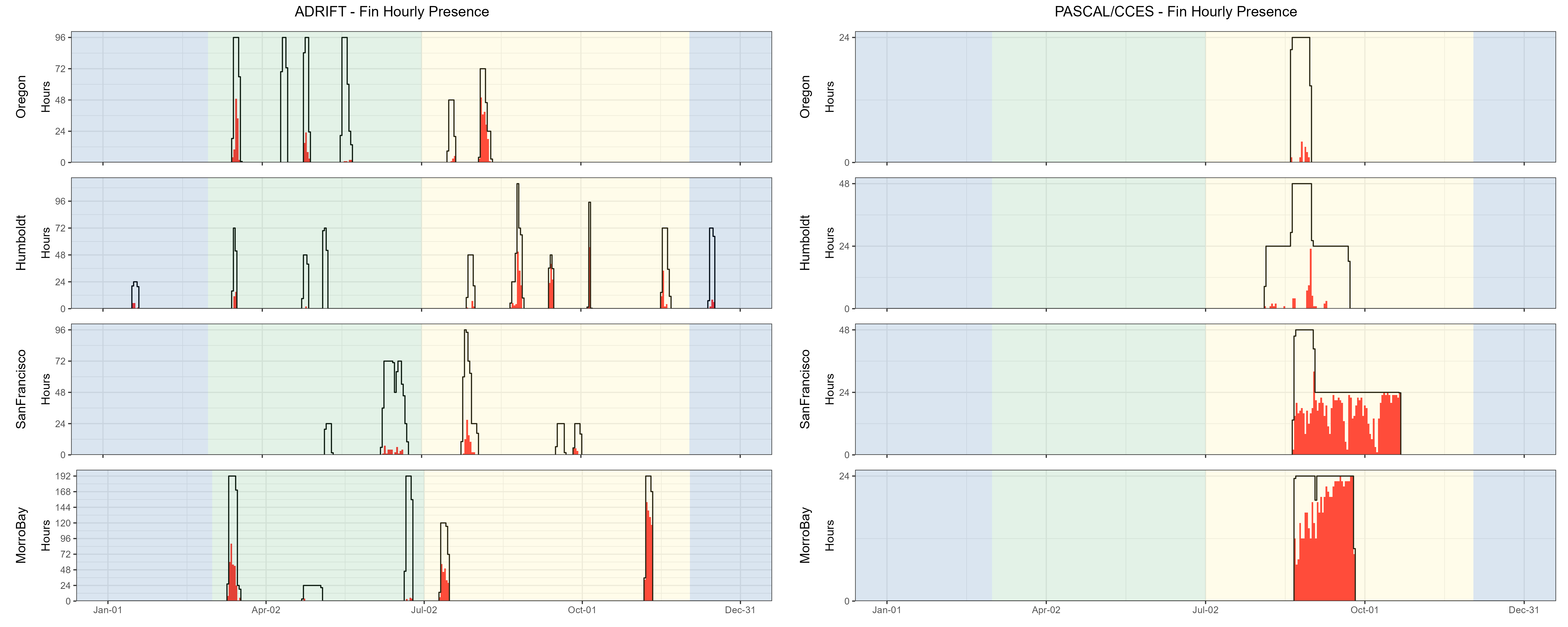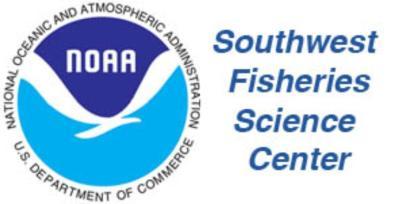| Upwelling | Post-Upwelling | Winter | |
|---|---|---|---|
| 20 Hz | |||
| Oregon | 0.08 (1430) | 0.37 (493) | – (–) |
| Humboldt | 0.06 (489) | 0.31 (1048) | 0.09 (308) |
| San Francisco | 0.04 (960) | 0.12 (688) | – (–) |
| Morro Bay | 0.15 (2034) | 0.54 (1353) | – (–) |
| 40 Hz | |||
| Oregon | 0.04 (1430) | 0.20 (493) | – (–) |
| Humboldt | 0.00 (489) | 0.00 (1048) | 0.00 (308) |
| San Francisco | 0.00 (960) | 0.00 (688) | – (–) |
| Morro Bay | 0.00 (2034) | 0.09 (1353) | – (–) |
Fin Whales
Fin whales were detected throughout the study area and at different times of year (Figure 1). Detection of fin whales during the combined PASCAL/CCES surveys showed strong presence in the Morro Bay and San Francisco regions, with low detections in Humboldt and Oregon (Figure 1).
Fin whale 20 Hz pulses had higher detection probabilities in the post-upwelling seasons for all locations (see table, right, and (fin-ADRIFT_fin2040_HourlyPresence?). This detection probability dropped during the (limited) winter data for Humboldt.
Fin whale 20 Hz detections were lower off San Francisco than other areas, though detection of low frequency fin whale calls in this area may be compromised by low frequency noise associated with high levels of low frequency noise associated with large shipping traffic (container ships).
The fin whale 20 Hz call is the most commonly reported and is thought to be used as a social call to establish and maintain contact when produced in irregular sequences (Edds-Walton 1997) and it may serve a reproductive function when produced by males in a regular sequence forming song (Croll et al. 2002). Here we did not differentiate between irregular and regular sequencing.

The 40 Hz call has a more irregular pattern and has been positively associated with prey biomass, providing evidence that it is associated with a foraging function (Romagosa et al. 2021). Most 40 Hz fin whale detections occurred off Oregon, with a few detections off Morro Bay. Detection probability was highest during the post-upwelling season for both Oregon and Morro Bay (there were no detections during the upwelling season off Morro Bay).

Detailed methods are provided in our GitHub online analysis methods , in a report provided by OSA and archived on our Adrift Analysis Methods.
A pilot study to develop a deep learning network to detect and classify fin whale 20 and 40 Hz calls was initiated by Ocean Science Analytics (see Fin Whale AI and OSA Report on Fin Whale Deep Learning in Github Repository.
